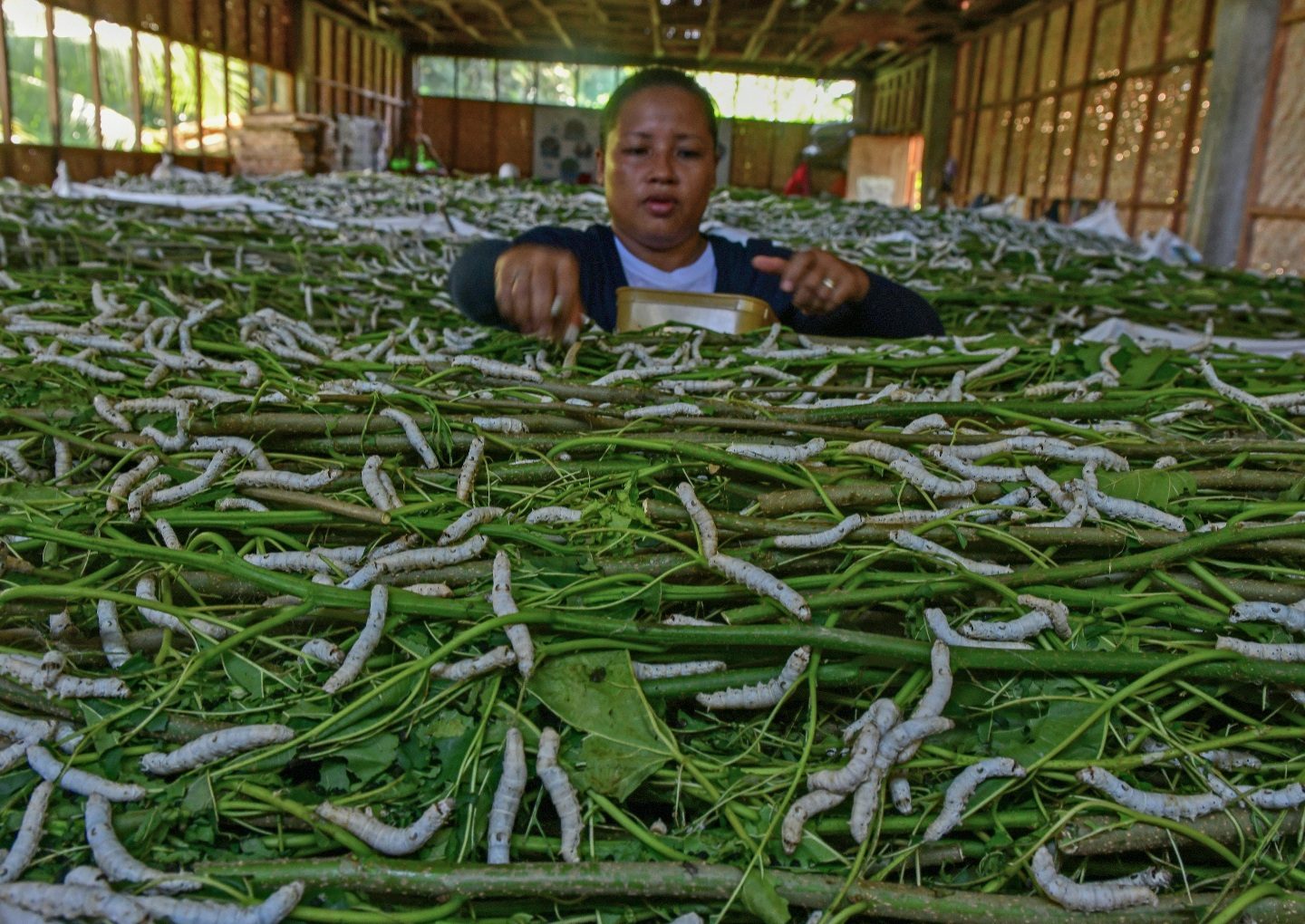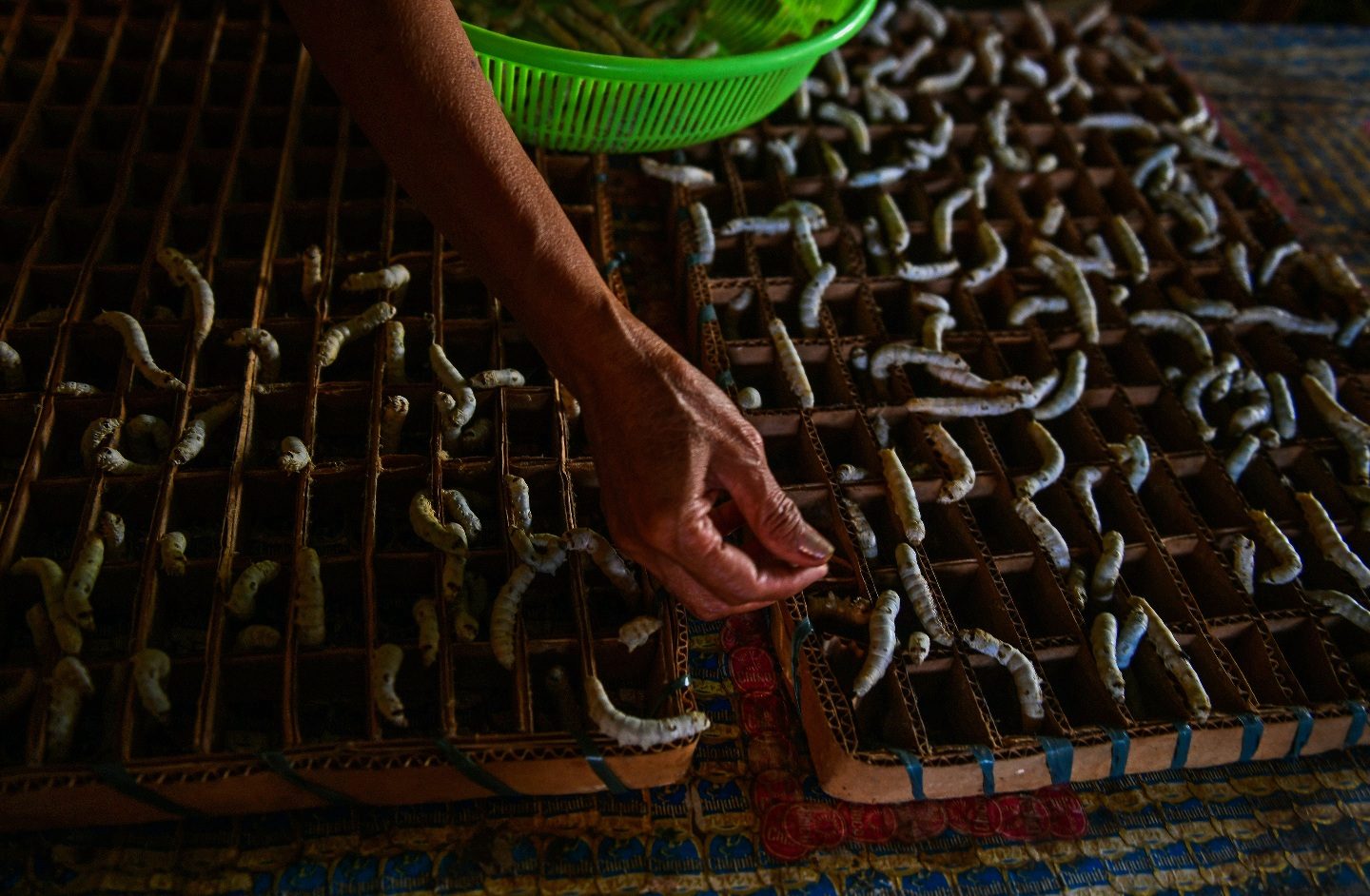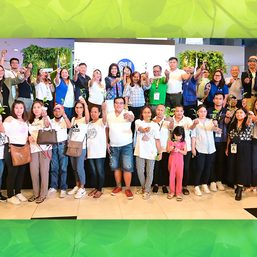SUMMARY
This is AI generated summarization, which may have errors. For context, always refer to the full article.

CAGAYAN DE ORO, Philippines – Emilia Cabilic carefully arranges piles of mulberry leaves, being cautious not to startle the velvety silkworm caterpillars that are voraciously devouring the fresh, green foliage at the production hub of the Balubal Sericulture Farmer Association in Barangay Balubal, Cagayan de Oro City.
The 62-year-old Cabilic and other women farmers repeat this process until the caterpillars reach the stage when they are ready to spin cocoons of silk threads around themselves, which happens 30 days later.
Afterward, she harvests the cocoons and sells them for P400 to P500 per kilo.

“We feed them every day. You can hear them eat the leaves. They have a hearty appetite for the leaves,” Cabilic said.
These velvety silkworm caterpillars are offering hope and a source of livelihood for the women at the relocation site in Barangay Balubal, which is situated around 19 kilometers east of downtown Cagayan de Oro.
“We started something that made changes among the women in the relocation site,” said Marilyn Galindo Arabis, the president of the Balubal Sericulture Farmers Association.
The community, Cagayan de Oro Resettlement Socialized Housing Project 4 in Barangay Balubal, is home to some 4,000 families that used to dwell in urban slums in Cagayan de Oro.
Due to its luscious and lightweight threads, silk is in high demand in the clothing industry for creating gowns, scarves, robes, dresses, and shirts.
To support sericulture farmers in Balubal and four other production centers in Misamis Oriental, the Department of Science and Technology (DOST) established a silk research and innovation center in Claveria, Misamis Oriental.
The center buys cocoons from the farmers and sells them to weavers nationwide, including those located in Laguindingan, Misamis Oriental.
The DOST-Philippine Research Institute (PTRI) has estimated the demand for local silk used in clothing to be 10 tons per year.

According to the DOST, the global silk market was valued at US$ 15.6 billion in 2021.
Arabis said that due to the constant care and attention required by the caterpillars, the women in their association gather at the small farmhouse where the caterpillar larvae are housed.
She said they were proud of their achievement and the success of their sericulture endeavor – they have already completed 14 harvests since the project’s inception in 2021.
“During the COVID-19 pandemic, we didn’t rely on ayuda (government aid). The caterpillars were able to sustain us,” she said.
Kris Buntag, the chief of the Cagayan de Oro Social Entrepreneurship Program, said the City Housing and Urban Development Department is working to provide an additional two hectares for sericulture to benefit the beneficiaries of a local resettlement project in Barangay Balubal.
“At present, Arabis and the women have only one hectare, but we intend to add another two hectares due to their success,” Buntag said. – Rappler.com
Add a comment
How does this make you feel?







![[WATCH] In the Public Square with John Nery: Abolish the National Housing Authority?](https://www.rappler.com/tachyon/2024/03/In-the-Public-Square-LS.jpg?resize=257%2C257&crop=377px%2C0px%2C1080px%2C1080px)

There are no comments yet. Add your comment to start the conversation.